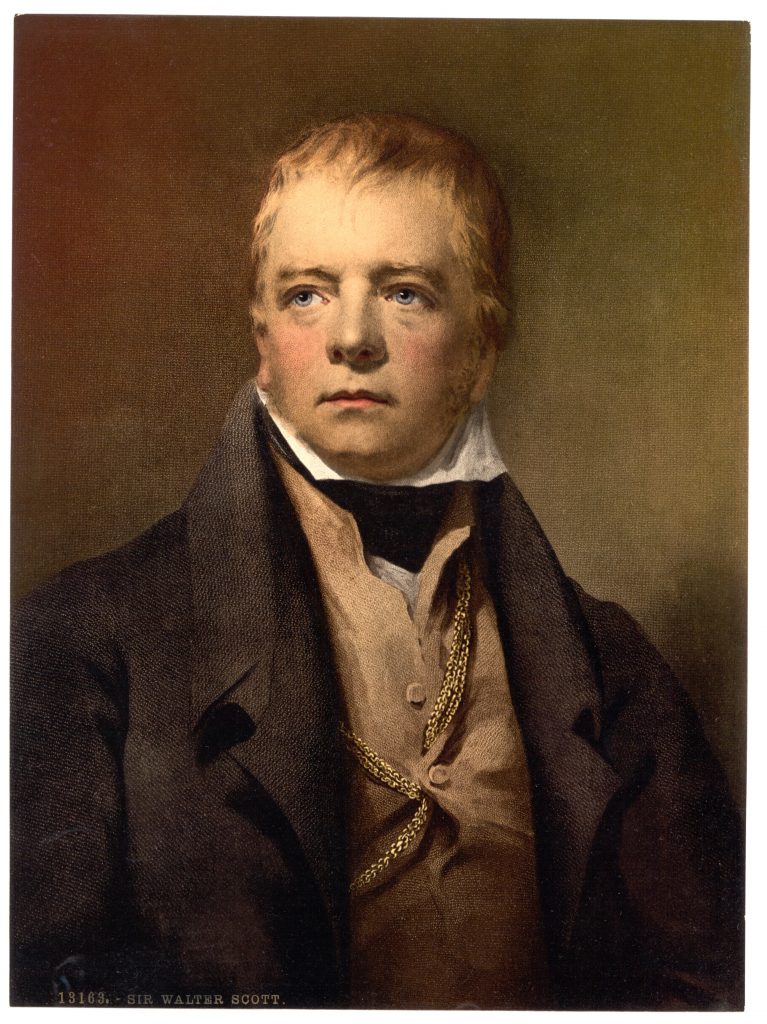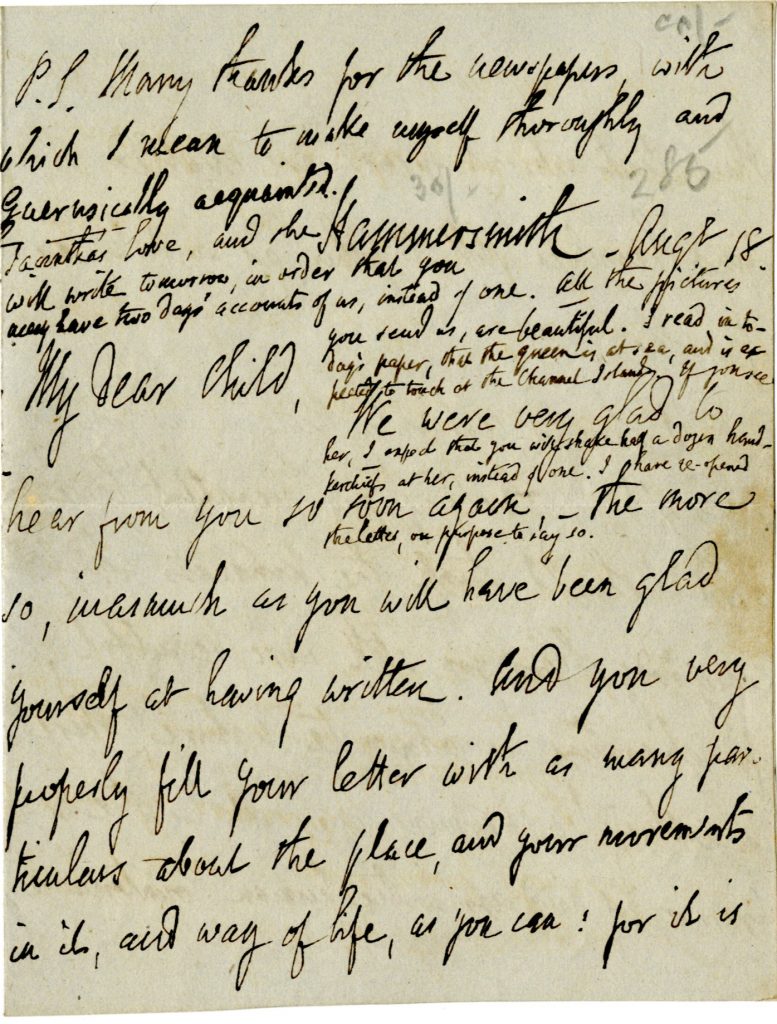Borrowing its title from a collection of essays by C. S. Lewis, this series, “They Asked For A Paper,” highlights interesting items from the Armstrong Browning Library’s collection and suggests topics for further research.
By Melinda Creech
Manuscripts Specialist, Armstrong Browning Library
In the DeCastro Album, on the same page as the Leigh Hunt letter, is an unpublished letter from Sir Walter Scott, Scottish historical novelist, playwright and poet, to Samuel Shepherd, a British barrister, judge and politician who served as Attorney General for England and Wales and Lord Chief Baron of the Scottish Court of Exchequer, dated 4 October, 1825.
The letter reads:My dear [Lord]
Lady Shepherd & Miss Runnington as well as your Lordship gave us hopes that you would look in upon Conundrum Castle this year The season promises still a few fine days rather a bonus upon these we have had already which have for Scotland been an ample dividend. New Lord & Lady Gifford [under] the Solicitors pilotage propose us the honour of a visit on [friday] 7th and as they are I believe Friends of Lady Shepherds & yours Lady Scott & I would be much flattered by your meeting them under this roof and I hope Miss Runnington will do us the honor to accompany you Should you agree to this proposal your Lordship had better write a note on Thursday to secure horses
What a melancholy conclusion to our poor friend the Chief Commissioners final hopes and expectations I am sure your Lordship would feel it [surrely] [sic] He is I understand in general correspondence resigned though his firmness is broken occasionally—as who can wonder—with bouts of acute distress.
[Page 2]
Lady Scott & Ann give our respectful compliments to Lady Shepherd & Miss Runnington and am always my dear Lord
Most truly & respectfully yours
Walter Scott
Abbotsford Melrose
4 October
[Envelope]
OCT
5
1825
MELROSE
Right Honorable
The Lord Chief Baron
&c &c &d
Edinh
[Edinburgh]
In fact, Lord and Lady Shepherd did visit Scott in October of 1825, along with ” a large houseful” of others. (Scott, Walter et al. The Letters of Sir Walter Scott. Vol. 9. New York: AMS Press, 1971, 233-4.)
What was the “melancholy conclusion” to the “final hopes and expectations” of Scott’s “poor friend the Chief Commissioner”?
Does this letter add any names to the list of Scott’s acquaintances?
What is the story behind the “Castle Conundrum”?
Are there additions or corrections to the transcription?




![Letter from Sir Walter Scott to [Samuel Shepherd], 4 October 1825, intergral address.](https://blogs.baylor.edu/armstrongbrowning/files/2017/02/Scott4-2lp5f15-647x1024.jpg)






